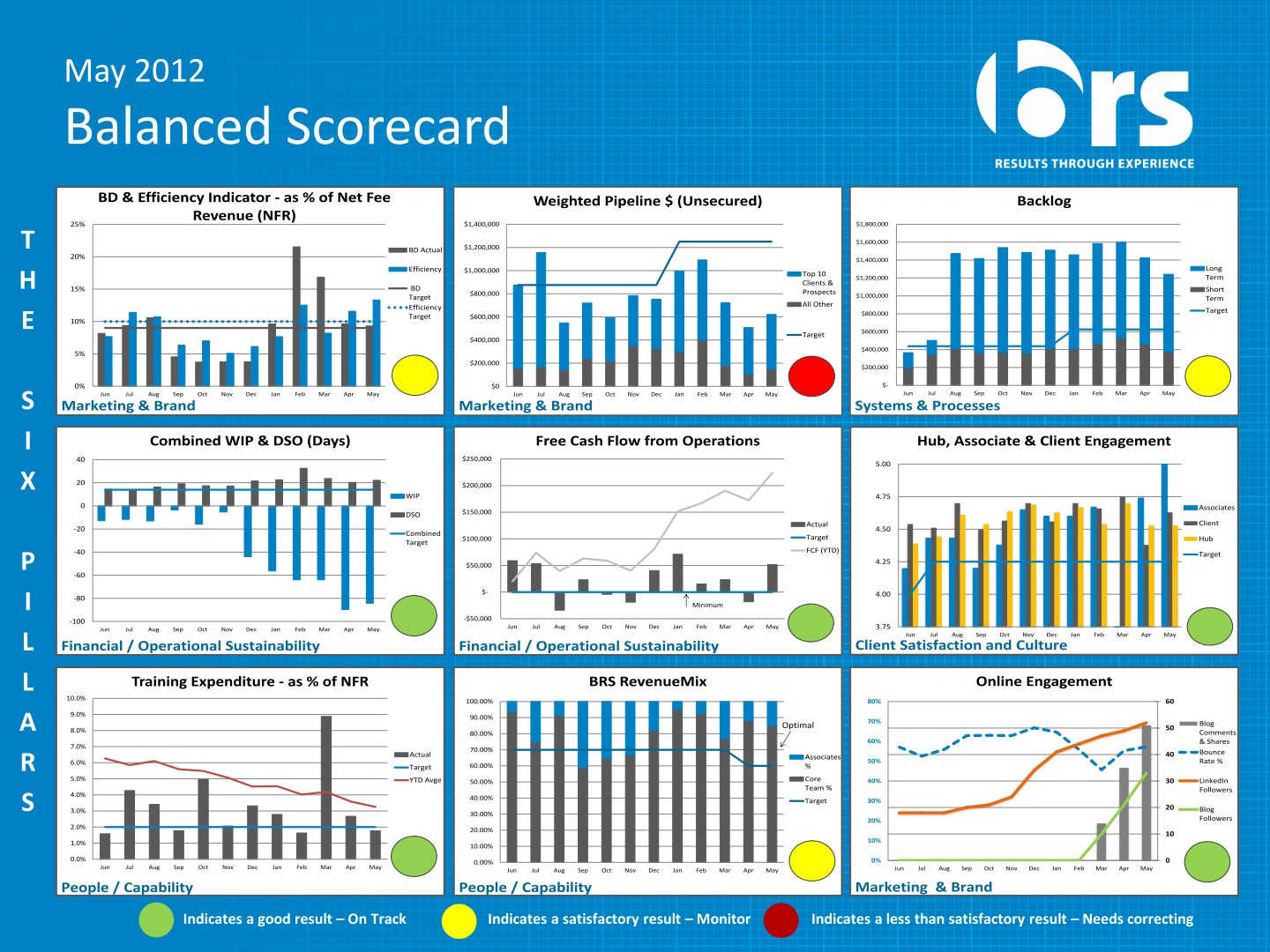
by Guest Blogger – Alex Normandale
Our first blog on the Balanced Scorecard covered what a Balanced Scorecard is and why it is important, but now we want to focus on how to use it and implement it in your business.
You need to take the following six keys steps in order to implement a Balanced Scorecard in your business:
1. Lead the implementation
Do this through a clear, focussed and specific Strategic Plan. Your Strategic Plan should contain key performance indicators (KPIs) and outline clear targets and time frames, which are linked back to your core business pillars.
2. Prepare for change
Communicate the process for implementing the Balanced Scorecard to your team and set up systems to successfully measure your people’s performance. It is crucial that all team members are clear on what the Balanced Scorecard is, and more importantly the reason why it is so important (discussed in Part 1 of this blog).
3. Develop performance measurements
Determine the critical business drivers in each performance area, set related goals and then identify ways to measure results. These performance measurements should reflect and be linked back to your Strategic Plan’s goals and business pillars.
4. Make sure measures are transmitted throughout your organisation
Scorecards need to “ripple down” through your organisation if everyone is to work to achieve your vision, in their own particular ways. It is important that all employees are clear on where their focus areas are and how their roles contribute to achieving the targets in the Balanced Scorecard (and hence the Strategic Plan).
5. Plan initiatives
Once you have developed specific goals and targets, you need to plan the short term and long term initiatives and actions needed to achieve them. Ensure that these initiatives are simple and easy for your team to understand so that they are clear on their roles and the steps they need to take on the journey going forward.
6. Follow-up and Evaluate
Following-up and evaluating the results of the Balanced Scorecard is essential. Putting the Balanced Scorecard into action comes down to three simple questions – Who, When and Where?
Who: Your whole team should understand the purpose and interpretation of the Balanced Scorecard. This involves every team member having an intimate knowledge of your business’s strategic plan and pillars and how they have been incorporated into the Balanced Scorecard.
When: It needs to be reviewed and updated on a periodic basis (e.g. monthly) so you can address issues actively, better achieve your strategic goals, flag unexpected issues and brainstorm ways to improve trends. This will drive proactive (rather than reactive) behaviours toward the key drivers of your business, which can be the difference between success and failure (in the short or long term)! Reviewing and discussing the results of the Balanced Scorecard should be incorporated into your monthly team meeting, followed by action-planning for the month ahead focussed around key areas of concern on the Balanced Scorecard.
Where: The monthly Balanced Scorecard results should be disseminated to the entire team within 5 business days of month end so that everyone knows how the business is tracking against its strategic objectives and can give valuable input if there are issues that need to be addressed. At BRS we print out our Balanced Scorecard and its interpretation in a poster-size document and stick it up on our wall so that it is clearly visible to all team members.
Below is an example Balanced Scorecard:
We hope this knowledge will assist you implementing a Balanced Scorecard. If you would like any further information on the Balanced Scorecard Approach, please contact us at enquiries@easyconsult.com.au or on +61 8 8215 0332.




